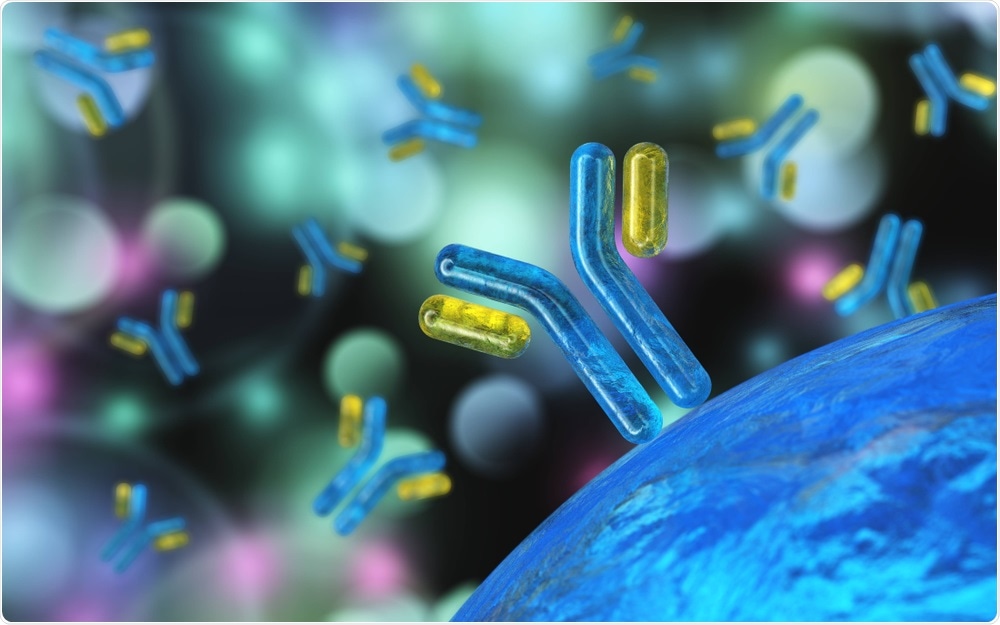Recently, Prof. XIE Can from the High Magnetic Field Laboratory of the Hefei Institutes of Physical Science (HFIPS), in a collaboration with Prof. YAN Xiyun's lab from the Institute of Biophysics, reported the structural basis of mAb AA98's inhibition on CD146-mediated endothelial cells (EC) activation and designed higher affinity monoclonal antibody HA98 for cancer treatment.

Monoclonal Antibodies. Image Credit: ustas7777777/Shutterstock.com
CD146 is an adhesion molecule that plays important role in angiogenesis, cancer metastasis, and immune response. Prof. YAN Xiyun's lab has been focused on the function of CD146 and the mechanism underlay, aiming to develop antibody drugs targeting CD146.
Their previous studies demonstrated that CD146 triggered the signaling cascade via dimerization induced by various ligands. AA98, a monoclonal antibody (mAb) binding to CD146, shows inhibitory effects on tumor growth. However, the structural basis of CD146 activation and AA98 inhibition remains to be addressed.
In this research, the researchers described a crystal structure of the CD146/AA98 Fab complex at a resolution of 2.8 angstroms. Structural analysis elucidated AA98 stabilized CD146 in monomer conformation thus inhibited EC activation. A higher-affinity AA98 variant (named HA98) was then rationally designed based on the complex structure in this study.
Further experiments on an animal model with HA98 revealed superior inhibitory effects on tumor growth to those of AA98, which suggested future applications of this antibody in cancer therapy.
There was so much to do, this collaborative project was initiated about 9 years ago. The crystal structure of CD146/AA98 complex was only the first step, and how to use the structural information we obtained in rational design was much more attractive to us. Researchers from two labs have been working together from different perspectives to bring up a better antibody for potential cancer therapy. The collaboration was successful indeed."
XIE Can, Professor, High Magnetic Field Laboratory, Hefei Institutes of Physical Science (HFIPS)
Source:
Journal reference:
Chen, X., et al. (2021) Structure basis for AA98 inhibition on the activation of endothelial cells mediated by CD146. iScience. doi.org/10.1016/j.isci.2021.102417.